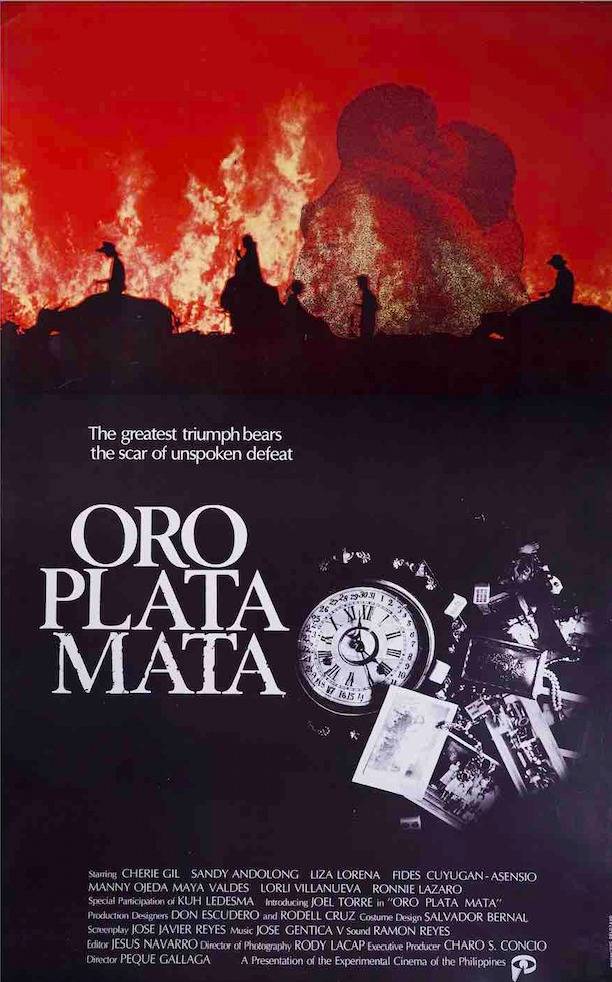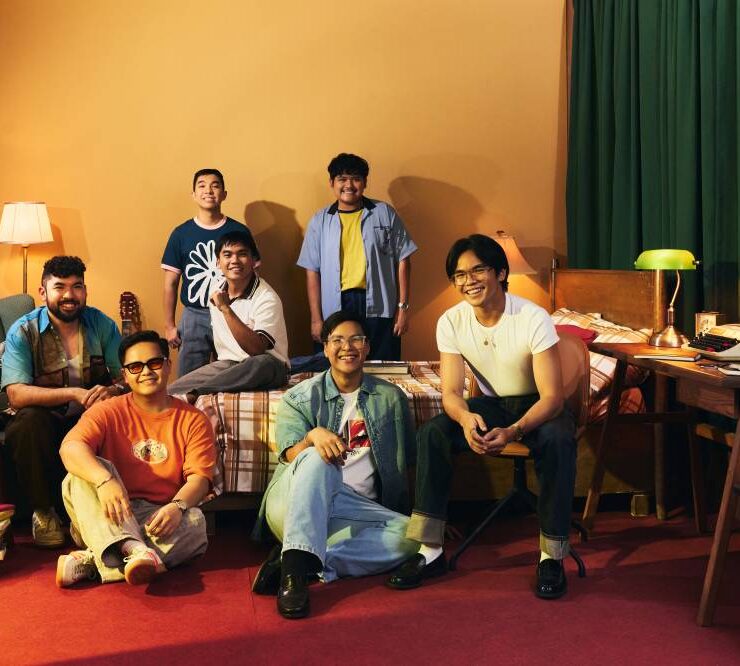The grandeur, magnitude, and madness of ‘Oro, Plata, Mata’

It was like God touched my forehead, and my wish was granted. Finally, I’m doing my ultimate wet dream project!” Peque Gallaga gushes as he reminisces on his masterpiece, “Oro, Plata, Mata,” in a Greenhills coffee shop one Saturday afternoon. His story was chosen as one of the finalists in the scriptwriting contest organized by the Experimental Cinema of the Philippines in 1982, and like the film itself, its journey to the screen was epic.

From story to screen
In the late 1970s, Gallaga tirelessly pitched his story—then titled “Jungle Story”—to every major producer, from Regal Films to Bancom and Premiere. It took Joey Reyes to finally think of the right title. “Oro, Plata, Mata”—literally gold, silver, and death—was both elegant and incisive, perfectly capturing the film’s tale of two families in their attempt to preserve their lifestyle amidst the grim realities of the Second World War.
Despite having no box-office stars in its cast, the film earned widespread critical acclaim when it premiered at the Manila Film Center. Practically overnight, it catapulted Peque Gallaga into the ranks of the country’s most respected directors—an extraordinary feat for what was only his second film.
One can actually spot the P3.5-million budget allocated on the film because every prop and furniture used were real-time pieces, from the opening party scene to the Gaston mansion, up to the bandits’ house. The technical team was composed of Rody Lacap (cinematography), Jess Navarro (editor), and the breathtaking production design of Don Escudero and Rodell Cruz helped in achieving the time-warp, World War II look in the film.
With “Oro, Plata, Mata,” Gallaga’s first solo directorial credit, he delivered some of the most stunning visuals ever seen in a local period film. The epic exodus scene alone—often shown in worn 35mm prints during Pelikula at Lipunan retrospectives—never fails to elicit a resounding applause from audiences, even decades later. Though the film did not recoup its budget, it was rewarded with critical acclaim. The Gawad Urian honored it with major awards, including Best Picture (ECP, 1982), Best Director (Peque Gallaga), Best Production Design (Don Escudero & Rodell Cruz), Best Cinematography (Rody Lacap), Best Music (Jose Gentica V), and Best Sound (Ramon Reyes). Adjudged also by the Manunuri as one of the Best Films of the ‘80s. From the Film Academy of the Philippines, it won Best Supporting Actress for Liza Lorena.

A film that stood the test of time
The sex and violence inflicted on screen by Gallaga’s masterpiece always sparked a matter of debate with its three hours and 14 minutes total running time during its time of release. I was in grade three, accompanied by my cousin, when we trooped to the Manila Film Center back in January of 1983. I still remember the awe I felt stepping into the lobby, only to be turned away at the entrance for being too young. I ended up at the Harrison Plaza instead.
Whether Gallaga drew inspiration from “Days of Heaven,” “Gone With the Wind,” “Straw Dogs,” “The Leopard,” or “Apocalypse Now,” one thing is certain: “Oro, Plata, Mata” has stood the test of time.
Archivo 1984 will be hosting a landmark exhibition titled “Merienda at Manapla,” opening on Oct. 18 at its gallery in Karrivin Plaza. It will feature a rare collection of film posters, production stills, and memorabilia from one of Philippine cinema’s most celebrated works. The event will also include a special talkback session with members of the cast, offering audiences an intimate look into the making and legacy of this iconic film.





















